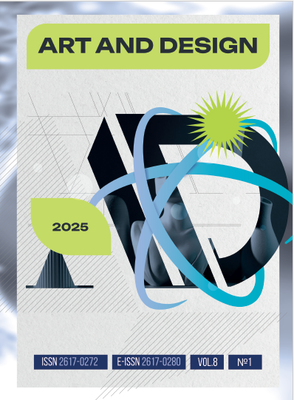Creative experimentation and the generation of innovative ideas in artistic design
DOI:
https://doi.org/10.30857/2617-0272.2025.1.1Keywords:
imagination, visual image, artistic modelling, form development, project visualisationAbstract
The creative component of the design process is fundamental, as it is associated with the search for
innovative solutions. In the creative process, the designer’s imagination plays a leading role – it serves as the
foundation for shaping and transforming the vision of the functional and aesthetic image of the future object.
This study was aimed to identify and systematise the main strategic directions and techniques that stimulate the
creative process in generating innovative solutions within modern design practice. The research methodology
included the analysis of information sources on design methods; tools for form development in architectural,
industrial, and environmental design; structural and systematic analysis; and synthesis of research results. It has
been demonstrated that human imagination operates on the basis of previously formed visual images through perception. The strategic approach to reativity development is shaped by visual-operational experience. It has been established that the main method of generating new ideas is creative experimentation. To stimulate the creative process during the ideation stage, it is advisable to apply techniques such as decomposition, alteration of
visual modelling tools, combinatorics, the use of simple and flexible tools, references and analogies, brainstorming, and design heuristics. The practical significance of these findings lies in their application to design practice, the education and training of specialists in artistic and creative fields, and further research in art history, cultural studies, architecture, and design.

